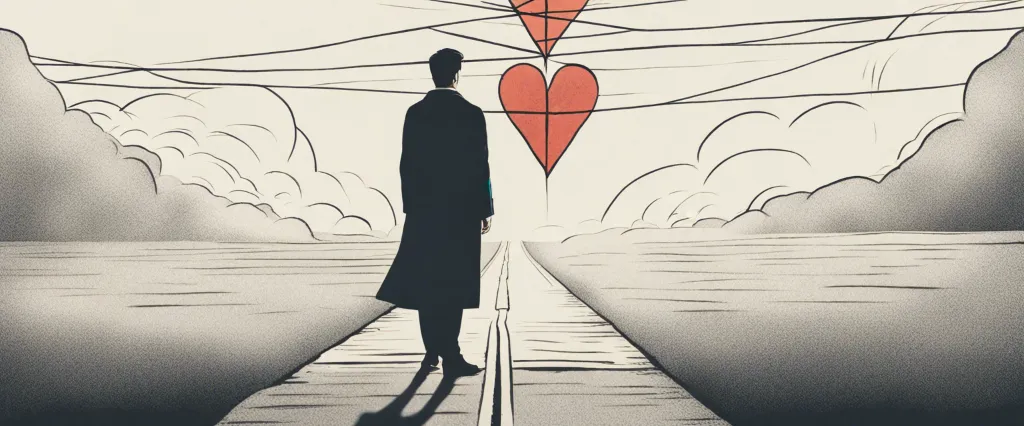
In the vast realm of self-help literature, countless authors have offered their insights into achieving personal growth and navigating the complexities of life. Among the myriad of works, two books have garnered immense popularity and captivated readers with their profound wisdom and guidance – “The Law of Attraction” by Esther Hicks and “Your Erroneous Zones” by Wayne Dyer.
“The Law of Attraction” acts as a spiritual guide, taking readers on a transformative journey towards understanding the power of their thoughts and emotions. Authored by Esther Hicks, in collaboration with her late husband Jerry Hicks, this book explores the universal law that asserts our ability to attract positive experiences into our lives through the thoughts we focus on. By unveiling the essence of the law of attraction, Hicks presents readers with a comprehensive framework for manifesting their desires and living a life filled with abundance and sheer joy.
On the other end of the spectrum, Wayne Dyer’s “Your Erroneous Zones” delves into the depths of our minds, challenging the limiting beliefs that hinder personal growth and fulfillment. Dyer, an esteemed psychologist and visionary in the field of self-improvement, offers an eloquent and practical guide to breaking free from the erroneous thinking patterns that cripple our potential. “Your Erroneous Zones” serves as a roadmap for identifying and overcoming the self-imposed barriers that prevent individuals from living authentically and experiencing true happiness.
Although both works share a common aspiration of helping readers enhance their lives, the approach and perspective of these two books diverge significantly. While “The Law of Attraction” emphasizes the role of universal energy and aligning oneself with positive vibrations, “Your Erroneous Zones” tackles personal transformation through the understanding and dismantling of erroneous beliefs. By juxtaposing the core themes and methodologies within these texts, this comparative study aims to extract the key principles and practical techniques that can empower readers to unlock their potential and thrive in all areas of their lives.
Join us as we embark on this exploration of profound wisdom and transformative ideologies. By examining the underlying philosophies, practical exercises, and real-life anecdotes presented in both works, we will unravel the threads that weave together to form a tapestry of personal growth, self-discovery, and the pursuit of a fulfilling life. Through this comparative study, we will discover the unique contributions of Esther Hicks and Wayne Dyer to the realm of self-help literature and discern how their perspectives can complement and enrich one another.
With curiosity as our compass, let us dive deep into the enchanting worlds of “The Law of Attraction” and “Your Erroneous Zones,” propelling ourselves towards a greater understanding of the human potential for growth, joy, and abundance.
Brief Summary of Two Books
The Law of Attraction by Esther Hicks
The Law of Attraction by Esther Hicks is a self-help book that explains the powerful concept of attracting what we desire into our lives through the Law of Attraction. The book is based on the teachings of Abraham, a collective consciousness entity channeled through Esther Hicks.
The Law of Attraction states that our thoughts and emotions magnetically attract similar experiences and circumstances into our lives. By learning to align our thoughts and feelings with our desires, we can manifest positive experiences and create the life we desire.
Esther Hicks breaks down the Law of Attraction into three main steps: asking, believing, and receiving. She emphasizes the importance of being clear and specific about our desires, imagining and feeling what it would be like to already have them, and letting go of any doubt or resistance.
The book also provides practical techniques and exercises to help readers apply the Law of Attraction in their lives. These include visualization, affirmations, and gratitude practices, which can help shift one’s perspective and focus towards abundance and positivity.
Throughout the book, Hicks encourages readers to take responsibility for their own lives and understand that they have the power to create their reality. By consciously choosing their thoughts and emotions, individuals can attract their desired outcomes and experiences.
In summary, The Law of Attraction by Esther Hicks explains the principles behind the Law of Attraction and provides practical guidance on how to apply it in everyday life. With a clear understanding of the Law of Attraction, readers can transform their thoughts, emotions, and actions to manifest their desires and live a more fulfilling and abundant life.
Your Erroneous Zones by Wayne Dyer
“Your Erroneous Zones” by Wayne Dyer is a self-help book published in 1976. The book focuses on helping readers identify and overcome the negative beliefs and thought patterns that may be hindering their personal growth and happiness.
Dyer introduces the concept of “erroneous zones,” which are irrational and self-defeating thoughts and behaviors that influence our emotions and actions. These erroneous zones can manifest as guilt, worry, indecision, or a fear of failure, among others. Dyer argues that these false beliefs are mainly caused by societal conditioning and can be reprogrammed through self-awareness and self-motivation.
The author offers practical and actionable advice on how to free oneself from these erroneous zones and how to live a more fulfilling life. He suggests taking responsibility for one’s own thoughts and actions, understanding that external circumstances do not define our happiness. Dyer encourages readers to set boundaries, pursue personal goals, and practice self-care.
Through relatable anecdotes and real-life examples, Dyer explains how individuals can develop healthy relationships, nurture their creative potential, and embrace personal empowerment. He presents various techniques, such as positive affirmations, visualization, and meditation, as powerful tools for self-improvement and self-realization.
Overall, “Your Erroneous Zones” is a timeless guide that empowers readers to take control of their thoughts and emotions, break free from societal conditioning, and create a more authentic and fulfilled life. It encourages readers to challenge their limiting beliefs and replace them with positive and empowering ones.
Comparison between Two Books

Similarities in Positive Thinking
Both “The Law of Attraction” by Esther Hicks and “Your Erroneous Zones” by Wayne Dyer emphasize the importance of positive thinking and its impact on our lives. Here are the similarities between their approaches to positive thinking:
1. The power of thoughts: Both books highlight the idea that our thoughts create our reality. They emphasize the need to focus on positive thoughts in order to attract positive outcomes and experiences.
2. Awareness of negative thinking: Both authors stress the significance of recognizing and challenging negative thoughts. By becoming more aware of our limiting beliefs and thought patterns, we can actively replace them with positive ones.
3. Taking responsibility for thoughts: Both books emphasize personal responsibility for our thoughts and the impact they have on our lives. Through conscious effort, we can choose to think positively and change our perception of the world around us.
4. Visualization and affirmation: Both authors suggest the use of visualization and affirmation techniques to reinforce positive thinking. By visualizing our desired outcomes and affirming positive beliefs, we can align ourselves with the energy of what we want to manifest.
5. Managing emotions and self-talk: Both books address the importance of managing emotions and adopting empowering self-talk. By reframing negative self-talk and understanding how emotions influence our thoughts, we can cultivate a more positive mindset.
6. The law of attraction: Both authors discuss the concept of the law of attraction, which states that we attract what we focus on. By maintaining a positive mindset and aligning our thoughts with our desires, we can invite positive experiences into our lives.
In summary, both “The Law of Attraction” and “Your Erroneous Zones” emphasize the power of positive thinking and its ability to shape our reality. Through conscious awareness and deliberate effort, we can reframe negative thoughts, visualize our desired outcomes, and align ourselves with the energy necessary to attract positive experiences.
Divergences in Positive Thinking
Both “The Law of Attraction” by Esther Hicks and “Your Erroneous Zones” by Wayne Dyer delve into the realm of self-help and personal development. While they share a common focus on the power of positive thinking, there are some notable divergences in their approaches.
One key divergence is how the two books perceive the concept of positive thinking. In “The Law of Attraction,” Esther Hicks advocates for the idea that positive thinking alone can manifest desired outcomes in one’s life. The book emphasizes the importance of maintaining positive thoughts and emotions, as they are believed to attract positive experiences and materialize one’s desires. Hicks suggests that individuals have the ability to attract anything they desire, simply by aligning their thoughts and emotions with their desires.
In contrast, Wayne Dyer’s “Your Erroneous Zones” takes a more nuanced approach to positive thinking. While he acknowledges the value of positive thoughts, Dyer emphasizes that merely thinking positive thoughts is not enough to create change in one’s life. He stresses the importance of taking action and making conscious choices to align one’s behavior and beliefs with positive intentions. Dyer asserts that positive thinking should be coupled with proactive steps towards personal growth and self-improvement, encouraging readers to identify and rectify the erroneous beliefs and behaviors that limit their potential.
Another divergence in their views lies in the source of negative thoughts and beliefs. Esther Hicks suggests that negative thoughts and emotions stem from a misalignment of energy or vibration. According to her teachings, individuals who experience negative emotions are not aligned with their true desires and should strive to shift their thoughts and emotions towards positivity to attract their desired outcomes.
On the other hand, Wayne Dyer believes that negative thoughts and beliefs are a result of societal conditioning and erroneous thinking patterns. Dyer argues that individuals have the power to change their negative beliefs and thoughts by challenging societal conditioning, questioning their own assumptions, and ultimately adopting new perspectives and thought patterns. Instead of solely focusing on energetic alignment, Dyer emphasizes the importance of self-reflection, self-awareness, and self-improvement.
In summary, while both “The Law of Attraction” by Esther Hicks and “Your Erroneous Zones” by Wayne Dyer touch upon the significance of positive thinking, they diverge in their approaches. Hicks emphasizes the power of aligning one’s thoughts and emotions with their desires, while Dyer stresses the need for proactive action, challenging erroneous beliefs, and societal conditioning.

Conclusion
Both The Law of Attraction by Esther Hicks and Your Erroneous Zones by Wayne Dyer are highly regarded self-help books, each offering valuable insights and guidance in different ways. The worthiness of reading either book depends on your specific interests and needs.
The Law of Attraction focuses on manifesting desires through the power of thought and belief. Esther Hicks explores the idea that positive thinking and aligning oneself with the energy of what is desired can attract positive experiences and outcomes. This book can be beneficial if you are interested in understanding and utilizing the Law of Attraction to manifest your goals.
Your Erroneous Zones, on the other hand, addresses the issue of self-defeating thoughts and behaviors. Wayne Dyer provides practical guidance on identifying and overcoming self-limiting beliefs, transforming negative patterns, and taking control of personal happiness and growth. This book can be helpful if you are looking to improve your mindset and overcome obstacles in personal development.
Ultimately, the choice between the two books depends on your personal preferences and goals. If you are more inclined towards the Law of Attraction and manifesting desires, The Law of Attraction might be more suitable for you. However, if you are seeking advice on self-improvement and transforming negative patterns, Your Erroneous Zones could be a better fit. Both books offer valuable insights, so you may want to consider reading reviews and summaries to determine which resonates more with your specific needs.


